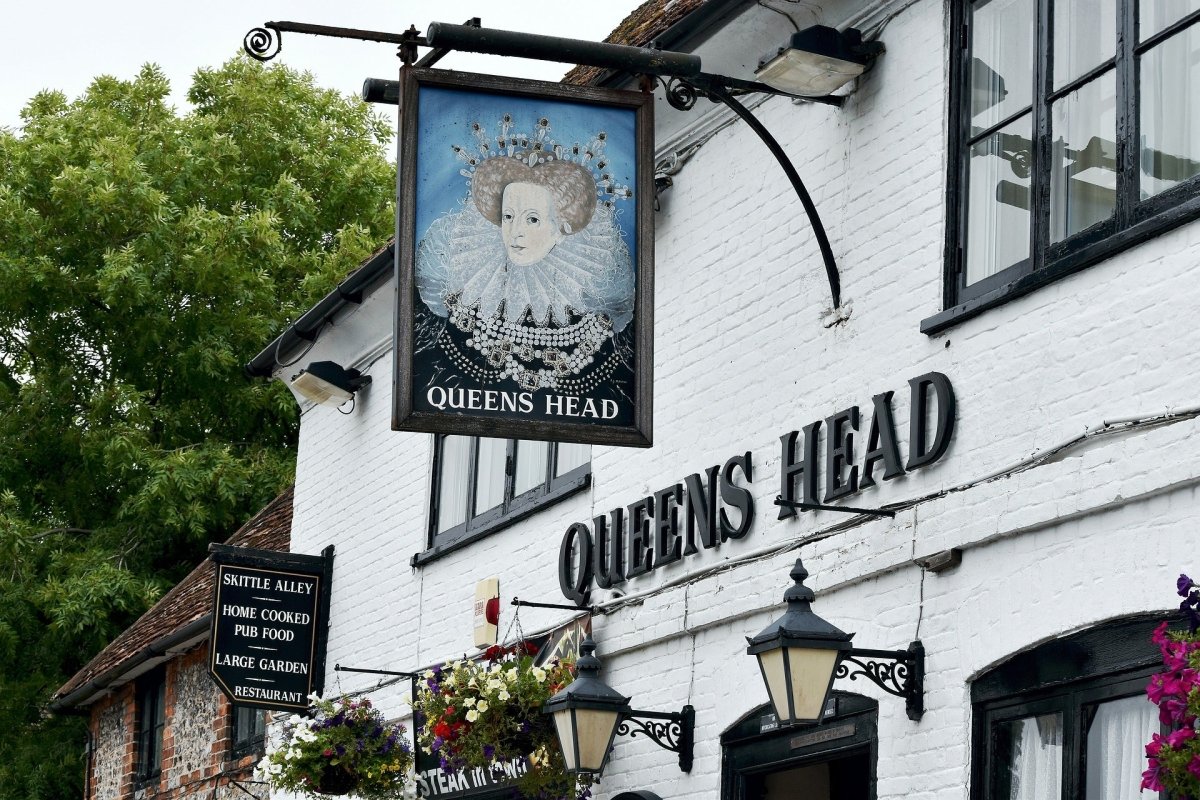-
Shop Beer
-
Shop Merchandise
-
Blog
-
Find Us
-
About
Your cart is empty
Looks like you haven't added anything to your cart yet

The History of Pub Signs
It’s not every day that we stop to smell the roses but we do like to spend some time learning about the history of beer. Recently, we’ve been pondering about the beautiful signs hanging outside of our favourite watering holes. When did they first come into fashion? And what’s with the quirky pub names?
It was these thoughtful inquiries that led us to reach out and get to know the great British pub sign.
Early Origins of Pub Signs
It is thought that pub signs in this country trace their roots all the way back to the Romans. Of course, the alcoholic vehicle of choice during this period was wine. Local tabernae would hang vine leaves, shrubbery, or ivy outside the venue to make the drinking public aware that they were open for business.
These leafy arrangements would either be hung on the outside of the building or suspended from poles. When the Romans left, the tabernae were gradually converted back into alehouses. Despite replacing wine with beer, the local publicans held onto the tradition of hanging vine leaves and other leafy vegetation.
Today this is commonly represented by vine leaves or even a hop flower hanging from your local’s sign. While not certain, it appears these primitive pub signs predate the use of official pub names by several hundred (or more) years.
In this case, “alehouse” names began to appear in the middle ages. Others believe pub names go all the way back to the beginning of the Roman occupation in 43 AD.
Pub Signs in the Middle Ages
It was during mediaeval times that pub names became heavily adopted in the UK and Europe. During this time, the vast majority of people were illiterate. As far as the average person was concerned, the “Fox and Hound” might as well have been the “Cock and Bull.”
This is where early pioneers of graphic design first reared their heads. Moving on from crude symbols, taverns began hanging beautiful hand-painted signs on the outer walls. These depictions were paired with creative names rooted in local history and folklore (and often featuring animals or creatures).
King Richard II

Image source: wikipedia
King Richard II made a law for pub signage to make things clearer for the drinking public
In 1393, King Richard II passed a law making it compulsory for public houses and inns to place signs for identification purposes. Drinking spaces were to be made official after being visited by the “Ale Taster.” This officious beer certifier was to be paid in pints in exchange for inspecting the facility and its libations.
(Remember the next time you go down the pub, you’re simply “inspecting” it—better have a second pint just to make sure the pub is legit!)
The Tudors
Leaving the middle ages brings us to the Tudor period. It was during this time that many pubs began to take on religious names and themes. In fact, several pub landlords at the time were the monasteries themselves.
The religious trend would quickly flip after the Reformation took place as public houses attempted to whitewash their pious, Catholic identities. For example, a pub named “The Ark” may have changed its name to “The Ship.”
Others sought to appeal to King Henry VIII opting for loyalist names such as “Kings Head”, “Kings Arms”, or much later “The Crown.”
17th and 18th Centuries
It was during the 17th century when pub names (and thus pub signs), began to trend towards more stately names. This was a direct result of the English Civil war. Many pubs changed their signage in support of the royalist or the parliamentarians.
As usual, the victors write history. As such, any “Roundhead” supporting pub would have changed its name to one of the many loyalist names mentioned above or the much beloved “The Red Lion.”
The red lion grew in popularity as a symbol of courage, strength, and bravery. It also represented the royal family as well as many other families throughout Britain. Today, more pubs are named “The Red Lion” than any other name.

Image source: Unsplash
The Red Lion is the most popular pub name in Britain
Another popular choice in the post-Cromwellian era was “The Royal Oak”. This name was associated with Charles II and pointed to the both the Restoration of 1660, and the restoration of the Monarch’s honour.
Heraldry, Sport, and Travel
During the 17th century, both heraldry and sport became common sign depictions and pub themes. Besides the aforementioned red lion, other black, white, and golden lions could be found on pub signs across the country.
Outside of England, one could find the Welsh Red Dragon, the Scottish White Horse, or Richard III’s White Boar.
Besides heraldry, traders' arms could also be spotted amongst the crowd of public house signs. These included the “arms” of vocations such as:
- Bricklayers
- Masons
- Carpenter
- Blacksmiths
And we mustn't forget sport! For better or worse, it helped shape the past few centuries of Great Britain after all! Many pub signs contained images of greyhounds, foxes, ducks, hares, pheasants, and other game birds. These establishments may have had single or paired names or more clever takes such as “The Bird in Hand.”
It was also during the 18th century that the country became better connected with improved roads and modes of transport. At this time, coaching inns and coach houses becoming increasingly important.
Pub signs were the most effective form of marketing available to these venues. They needed colourful signs with images that would catch a traveller's attention. A classic name for these inns would be “The Coach and Horses.”
Similarly, canals and railways would be lined with similar one-night venues like the “The Railway Inn” or “The Barge.”
Celebrate History and Tradition
Here at Sheep in Wolf’s Clothing, we believe it’s good to understand our history, even if it’s something as simple as pubs. We enjoy being part of the progressive UK craft beer industry and being able to reach out to no/low beer drinkers across the country.
While there’s plenty that needs to change within our communities, maybe some things like the traditional pub sign should be left alone. Let’s celebrate the classic pub by giving them our business every now and then—don’t forget to ask for your favourite non-alcoholic lager from SiWC:)
- Choosing a selection results in a full page refresh.


